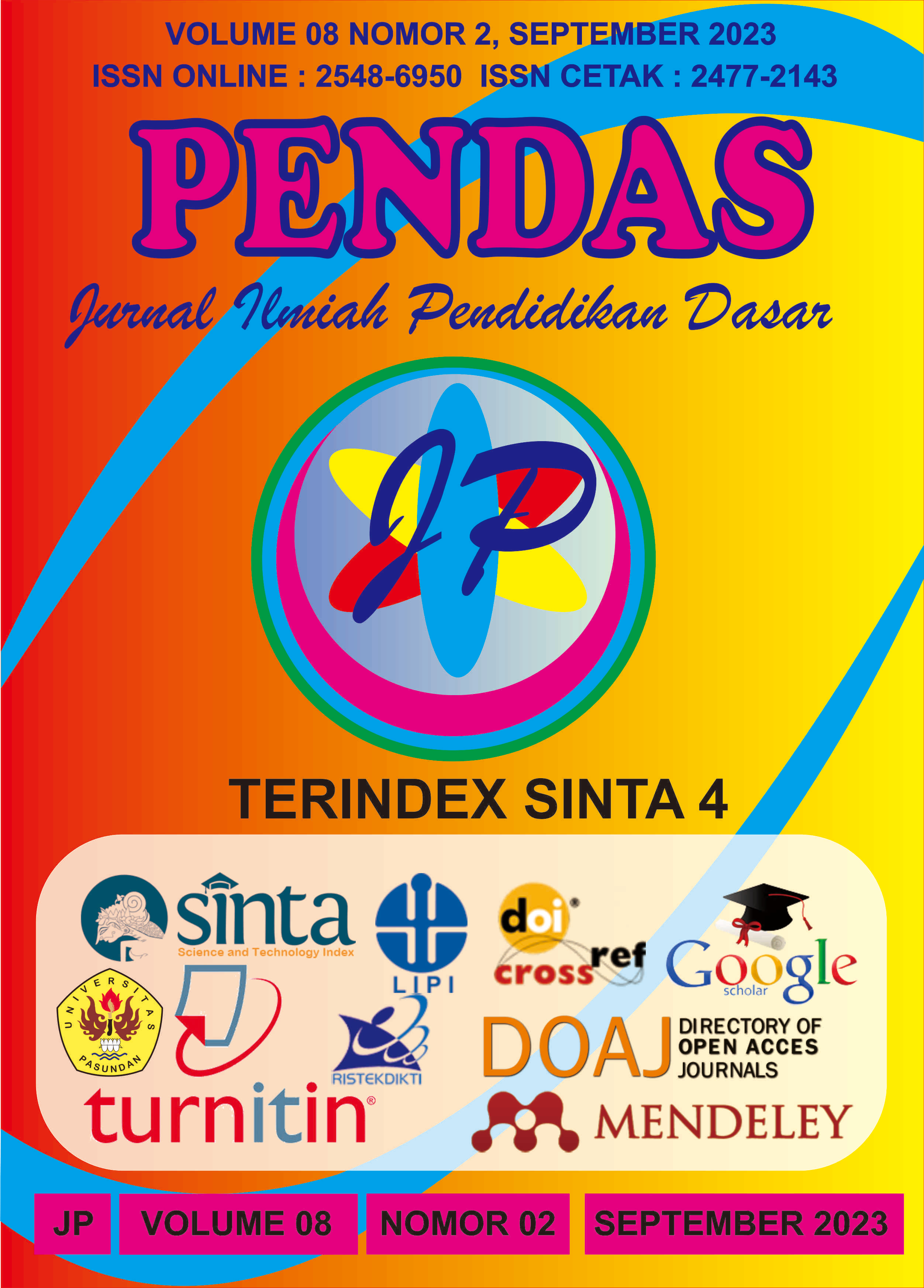PENERAPAN MODEL PEMBELAJARAN MIND MAPPING UNTUK MENINGKATKAN KEAKTIFAN DAN HASIL BELAJAR IPS PESERTA DIDIK KELAS 6 SD
DOI:
https://doi.org/10.23969/jp.v8i2.10483Keywords:
learning outcomes, Activeness, Mind MappingAbstract
This research was motivated by the lack of interest of students in the learning being delivered, causing students to become passive. Apart from that, the use of learning media to support learning is still lacking. This has an impact on students' activeness and learning outcomes. The type of research used is Kurt Lewin's Classroom Action Research model. Data collection techniques use test and non-test techniques. The test is used to obtain data on students' cognitive learning outcomes after learning (posttest) in the form of a written test. Meanwhile, non-test techniques use observation sheets to obtain data on student activity. The results of the research showed that by using the Mind Mapping model in cycle I, 13 students or 46% obtained a complete score and 14 students or 54% did not complete it. In Cycle II, a significant increase in results was seen, namely 26 students who obtained a Complete score or 93%, while only 2 students did not complete, 7%. Data from Cycle I activity results showed that 12 students or 43% were in the less active category, and 16 students or 57% were in the active category. In Cycle II, 10 students or 36% were in the active category and 18 students or 64% were in the very active category. It was concluded that the application of the Mind Mapping Model could increase the activeness and social studies learning outcomes of Class 6 students at SD Negeri 1 Tepusen.Downloads
References
Dewantara. (2019). Improving Students’ Learning Outcome: Implementaton Mind mapping Method With Goconqr’. Jurnal Pena Sains, 6(2), 97-102. doi:10.21107/jps.v6i2.6017
Fathurrohman, M. (2015). Model-Model Pembelajaran. Yogyakarta: Ar-Ruzz Media.
Herawan. (2015). Penelitian Tindakan Kelas dan Penelitian Tindakan Sekolah (Juknis). Surakarta: UNS Press.
Istikomah, D., & Koeswanti, H. D. (2019). ‘Mind mapping : an effective model to improve thematic learning outcomes’. Jurnal Pendidikan dan Pengajaran, 52(1), 10–14. doi:http://dx.doi.org/10.23887/jpp.v52i1.17244
Kurniasih, I. (2015). Ragam Pengembangan Model Pembelajaran. Jakarta: Kata Pena.
Manullang, M., & Silaban, P. J. (2020). ‘Penerapan Model Pembelajaran Mind mapping Untuk Meningkatkan Hasil Bealajar Siswa pada Tema Daerah Tempat Tinggalku Di Kelas IV SD Negeri 060914 Medan Sunggal Tahun Pembelajaran 2018/2019. Ilmiah Aquinas, 3(1), 110-129.
Masrurin, s. (2023). Peningkatan Hasil Belajar IPS Melalui Model Pembelajaran Mind Mapping Pada Siswa Kelas VI SDN Temas 02 Kota Batu. Jurnal Pendidikan Taman Widya Humaniora.
Ningrum , D. R. (2018). Analisis Kesulitan Belajar Siswa Dalam Menyelesaikan Soal Cerita di Kelas XI MAN 1 Stabat Tahun Ajaran 2017/2018.
Saputro, A., Basori, M., & Budiyanto, C. (2017). ‘The Application of Mind mapping Learning Model to Improve the Students’ Learning Outcomes and Liveliness’. Advances in Social Science, Education and Humanities Research (ASSEHR), 44-53. doi:10.2991/ictte-17.2017.2.
Shoimin, A. (2014). Model Pembelajaran Inovatif dalam Kurikulum 2013. Jakarta: Ar-Ruzz Media.
Suardi. (2020). Model Pembelajaran dan Disiplin Belajar di Sekolah. Yogyakarta : Prama Ilmu.
Suipna. (2021). Penerapan Metode Mind Mapping Untuk Meningkatkan Hasil Belajar IPS tentang Karakteristik Negara Asean pada Siswa Kelas VI SDN Gadang I Kota Malang. Warta Pendidikan .
Widyaningrum, & Hasanudin. (2019). Kajian Kesulitan Belajar Membaca Menulis Permulaan (MMP) di Sekolah Dasar. 189–199.
Downloads
Published
Issue
Section
License
Copyright (c) 2023 Pendas : Jurnal Ilmiah Pendidikan Dasar

This work is licensed under a Creative Commons Attribution 4.0 International License.



















